Adapted from Dr. Janet Brill of Fitness Together, here are ten strategies for promoting healthy eating and safe, permanent weight loss:
Eat Healthy to Stay Healthy
Everyone knows that what you eat has a major impact on your health. Americans typically eat an unhealthy diet loaded with fast food, sugar-based drinks, snacks that are high in fat and sodium, with lots of sweets but few vegetables and fruits. This has led to the epidemic of heart-related diseases, diabetes and cancers. The best advice is to EAT REAL FOOD. Avoid refined, processed foods and choose whole foods instead. If you are not 100% that what you are about to eat is real food, then don't eat it! Choose lean, skinless meats, nuts, beans, whole grains and lots of veggies and fruits.
Lose Weight at a Safe Rate
When it comes to losing weight and keeping it off, slow and steady wins the race. Weight that comes off too quickly with fad diets and gimmicks often returns, in greater amounts. The safest weight loss plans involve eating whole foods and exercise, which leads to 1-2 lbs. per week of weight loss. Those who take the slow and steady plan have higher rates maintaining a healthy weight for a lifetime.
Learn How to Control Emotional Eating
Nutrition experts suggest that 75% of overeating is caused by emotions. Understanding which emotions trigger your overeating is essential. Once you understand the "why" behind overeating, you can develop patterns and plans of healthful techniques.
Determine Caloric Need, then Count
There is a simple law of physics at work in weight loss. Consume more calories than you expend, and you will gain weight; burn more than you consume, and you will lose weight. This is true regardless of percentages of protein, fats, and carbohydrates that you eat. To determine your approximate goal weight, take 100 lbs and if you are female then add 5 lbs per inch; males add 6 lbs per inch. If you are larger framed, add 10%; if smaller framed, subtract 10%. Then take your goal weight and multiply it by 15.3 - this is your daily need for caloric maintenance. With exercise and caloric control, plan for a 500 calorie deficit per day, to lose a pound of fat per week!
Exercise Calories Count
As a general rule to record your exercise caloric expenditure, follow this: for light exercise, reward yourself 2.0, moderate exercise 3.0 and intense exercise 4.0. If you use an exercise caloric expenditure guide, simply move the count 2 decimal points and round up or down.
Journaling
Those who count calories for 12 weeks and record in a journal lose twice as much weight as those who do not. This is not a lifetime commitment - which would be insane! However, for a short time, equivalent to a semester of school, it will train you on how to eat for the future, making calorie counting unnecessary. If you use an online calorie counting service and your goal is 2,250 calories a day, then change this to 22.5 by moving the decimal point two places. Do the same for each food item you are recording, and round up or down - this will make your journaling faster, and just as effective.
Weigh Yourself Weekly
Those who weigh themselves weekly have more success losing weight. Make sure to weigh at the same time of day, and day of the week, each time - in similar clothes.It is typically best to weigh in the morning, before the day gets rolling. And remember, not everyone is going to lose weight immediately, because there are multiple factors such as the addition of lean muscle tissue, which weighs more than fat - so don't get discouraged! After 12 weeks, see where you are. If you've lost around 12 lbs, keep it up. If you have not, analyze your journal for how to make changes. If, however, you have done things the right way and are not losing weight, check with your physician to find other explanations, which could be hormonal in nature.
Get Support
If you struggle with maintaining a healthy weight, be sure to find support and accountability. This can be as simple as asking a friend or spouse to help you, joining an exercise group, and if necessary getting a trainer or registered dietician to help for a period of time. Spending a bit of money on these services for the equivalent of one school semester of your life could be the difference in your healthy and quality of life!
Reward Yourself
To reward yourself, create a caloric deficit beyond the 500 calorie per day goal by cutting a few more calories and/or through exercise. Then treat yourself to your favorite meal or restaurant.
Exercise the Right Way
Balancing cardio exercise with strength training is the best prescription for promoting health, fitness and weight control. Those who perform this combination 4 days a week lose the most weight. However, there is great value in exercising even 2-3 days per week. Strength training will increase your lean muscle tissue and speed your metabolism, as well as aid in preventing osteoporosis, arthritis, back pain, diabetes and depression. There are 168 hours in a week - make appointments with yourself, scheduling 2-4 hours of exercise every week.
To your health!
JULIAN

